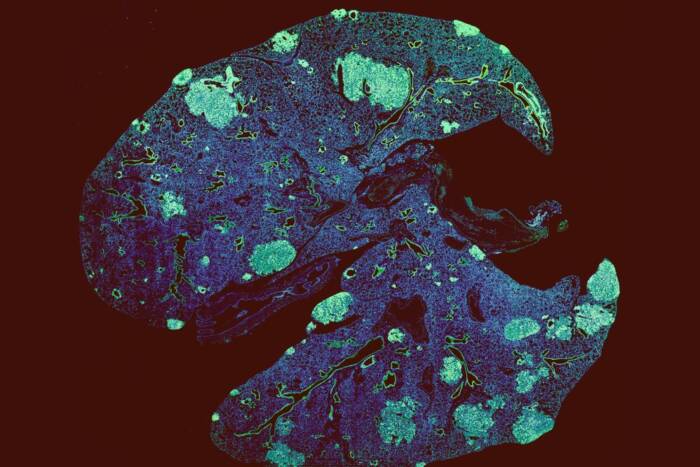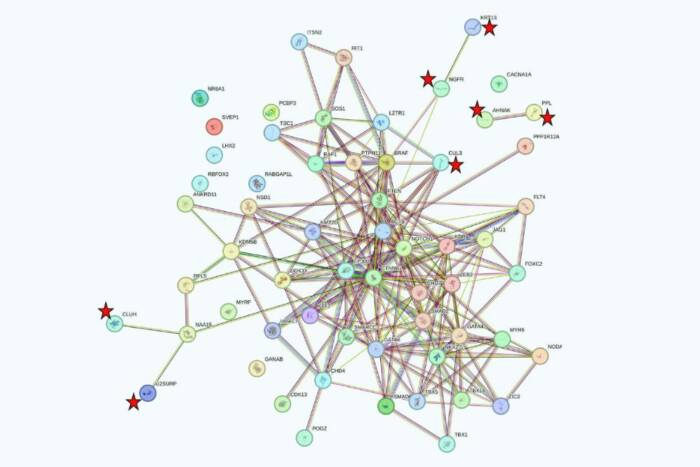Researchers examine how a face represents a whole person in the brain
The sight of a face offers the brain something special. More than a set of features, it conveys the emotions, intent, and identity of the whole individual. The same is not true for the body; cues such as posture convey some social information, but the image of a body does not substitute for a face.
A brain imaging study at the Rockefeller University offers some insight into how faces achieve this special status. The scientists found that certain spots dedicated to processing faces in the primate brain prefer faces with bodies—evidence they are combining both facial and body information to represent an individual.
The study, published on October 13 in the Proceedings of the National Academy of Sciences, was conducted in rhesus macaque monkeys. Humans have a similar system that responds to faces, suggesting the findings have relevance for understanding our own social processing as well.
“The body, arguably, is the most important contextual clue a viewer has to help make sense of a face,” says senior author Winrich Freiwald, an assistant professor and head of the Laboratory of Neural Systems. “Work by Clark Fisher, a graduate student in my lab, is remarkable in that it shows how the face-processing network places information about a face into its natural context as part of the body, and so begins to generate a sense of agency associated with the whole individual.”
How the brain processes faces and bodies
In work published in 2008, Freiwald and his colleague Doris Tsao showed that a network of patches along a deep groove in the sides of the macaque brain act as a specialized system for processing faces. A similar system has been found in the human brain, although it is not yet clear how the respective networks align. Both macaque and human brains also have separate patches that respond to bodies.
The conventional anatomical wisdom is that both species’ brains process faces and bodies independently. However, some studies of human perception suggest a more complex situation. For instance, one study found people’s perception of the emotion shown by a face can be altered by body posture, even when the viewers were told to disregard the body.
More than the sum of the parts
In the study, Fisher began by showing macaques still images that either displayed the face of a fellow macaque alone, the body without a face, or the entire animal.
Using high-resolution brain activity scans, captured with a method known as functional magnetic resonance imaging, he recorded how each of the six macaque facial patches, located in a part of the brain called the superior temporal sulcus (STS), responded. This approach was intended to reveal if a patch reacted strictly to faces or to some degree to bodies as well—or if a patch preferred a face and body together more than the sum of both presented separately.
“The only known way to get what we call a superadditive response, which exceeds those prompted by an individual face and body combined, is if there is some kind of interaction between the facial and body information in the patch,” Fisher says. This interaction is important because it suggests the brain is no longer just receiving information from the eyes, but beginning to make sense of it.
Two of the four face patches, one in particular, showed evidence of a superadditive response. When Fisher replaced the macaque bodies with images of other objects—a metronome, a spray bottle, a power tool—superadditivity disappeared from these patches. This result suggested the two patches were responding specifically to bodies, not just any object.
He also performed the same experiments while looking at two neighboring body patches, but these patches appeared largely uninterested in faces. This finding appears to match the asymmetry found in human social perception—the fact that bodies influence our perception of faces, while faces do not really add to our reading of bodies.
A critical node
Aside from body context, another crucial clue to the state of mind and intent of another individual comes from the motion of his or her face. Previously, Fisher and Freiwald found face patches respond to facial motion. As it turns out, face patches’ preference for bodies and for facial motion intersect at one particular patch. Located within a region at the front of the STS, this patch responds strongly to both.
“We now think this particular face patch might be a critical node in social cognition, the process by which the brain infers a sense of agency for another individual and so determines how to interact appropriately,” Freiwald says.


